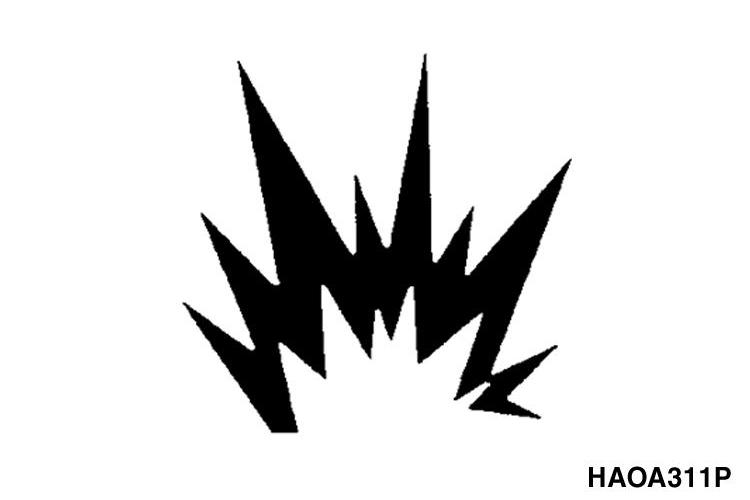
3 minute read
Maintenance
Flush eyes with water for 10-15 minutes if acid is splashed in the face. Anyone who swallows acid must have immediate medical aid. Call the Poison Control listing in the front cover of the telephone directory. Water, a popsicle or ice cream are likely better than old remedies that try to induce vomiting (which would expose tissue to damage twice). Explosive battery gas can be set off by sparks from incidental contact or static discharge. Turn off all switches and the engine when working on batteries. Keep battery terminals tight. Contact between a loose terminal and post can create an explosive spark.
Figure 17
HAOA440L
DISCONNECT BATTERIES FOR ELECTRICAL SERVICE BEFORE ELECTRICAL WELDING
Remove cable to negative terminal first, when disconnecting cable. Connect positive terminal cables
first when installing a battery.
USE LOW HEAT PORTABLE LIGHTING
Hot surfaces on trouble lights or portable work lights can set off fuel or battery explosive gases.
USE WARNING TAG CONTROL LOCKOUT PROCEDURES DURING SERVICE
Alert others that service or maintenance is being performed and tag operator’s cab controls - and other machine areas if required - with a warning notice. OSHA-mandated control lever lockout can be made with any OSHA certified lockout device and a length of chain or cable to keep the left-hand control console in the fully raised, non-active position. Warning tags for controls are available from Daewoo distributors.
Figure 18 WARNING
HAOC920L
DO NOT RUN THE ENGINE IF REPAIRS OR WORK IS BEING PERFORMED ALONE
You should always have at least two people working together if the engine must be run during service. One person needs to remain in the operator’s seat, ready to work the controls or stop the machine and shut off the engine.
ALWAYS USE ADEQUATE EQUIPMENT SUPPORTS AND BLOCKING
Do not allow weight or equipment loads to remain suspended. Lower everything to the ground before leaving the operator’s seat. Do not use hollow, cracked or unsteady, wobbling weight supports. Do not work under any equipment supported solely by a lift jack.
DO NOT WORK ON HOT ENGINES OR HOT COOLING OR HYDRAULIC SYSTEMS
Wait for the engine to cool off after normal operation. Park the excavator on a firm, level surface and lower all equipment before shutting down and switching off controls. When engine lube oil, gearbox lubricant or other fluids require change, wait for fluid temperatures to decrease to a moderate level before removing drain plugs.
NOTE:
Oil will drain more quickly and completely if it is warm. Do not drain fluids at 95°C temperatures but don’t allow full cool-down.
COOL-DOWN IS REQUIRED PRIOR TO
RADIATOR OR RESERVOIR CHECKS
Stop the engine and allow heat to dissipate before performing service on the engine radiator or hydraulic fluid reservoir. Both assemblies have air vent levers at or near the fill cap for venting built-up air pressure. Release the levers before trying to take off fill caps and LOOSEN CAPS SLOWLY, prior to removal.
PRESSURIZED HYDRAULIC OIL FLUID LEAKS CAN BE DANGEROUS
Fluid leaks from hydraulic hoses or pressurized components can be difficult to see but pressurized oil has enough force to pierce the skin and cause serious injury. Always use a piece of wood or cardboard to check for suspected hydraulic leaks. Never use your hands or expose your fingers.
Figure 19
HAOA060L
HAOA420L
Figure 20
WARNING!
Failure to obtain prompt medical assistance could result in gangrene or other serious damage to tissue.
USE CORRECT REPLACEMENT FASTENERS TIGHTENED TO PROPER TORQUE
Refer to the "General Maintenance" section of this manual for information on tightening torques and recommended assembly compounds and always use the correct part. Poor or incorrect fastener connections can dangerously weaken assemblies.
DISPOSE OF ALL PETROLEUM-BASED OILS
AND FLUIDS PROPERLY
Physical contact with used motor oil may pose a health risk. Wipe oil from your hands promptly and wash off any remaining residue. Used motor oil is an environmental contaminant and may only be disposed of at approved collection facilities. Never drain any petroleumbased product on the ground or dispose of old oil in municipal waste collection containers, or in metropolitan sewer systems or rural landfills. Check state and local regulations for other requirements.
Figure 21
HAOA470L
TRACK TENSION ADJUSTMENTS REQUIRE CAUTION
NEVER turn out the track tension grease fitting nut. To release pressure from the crawler frame track tension assembly, you should NEVER attempt to disassemble the track adjuster or attempt to remove the grease fitting or valve assembly. Keep your face and body away from the valve. Refer to the track adjustment procedure in the Operation and Maintenance Manual or this manual.




